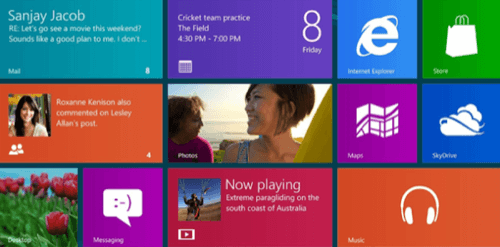
Once again demonstrating the importance of Windows 8 to its future, Microsoft has cut the upgrade price by some 90% compared to previous versions of Windows. Rather than charge Windows 7 upgrade prices of up to $220, Microsoft plans to sell the upgrade for Windows 8 Pro for less than $40 – at least during a promotional period.
The discount upgrade offer, announced Monday, is good for anyone currently using a legitimate version of Windows XP, Windows Vista or Windows 7. Once the upgrade is purchased online, Microsoft’s Windows 8 Upgrade Assistant tool will walk the customer through the process from download to installation. And customers can add Windows Media Center for no additional charge.
Betting the Company on Windows 8
In dramatically lowering pricing for its latest Windows upgrade, Microsoft is both demonstrating how far it is willing to go to get customers to upgrade to Windows 8 – and ripping a page from Apple’s OS X upgrade playbook.
Microsoft has apparently decided that getting people to upgrade en masse to an operating system that reflects a major shift in emphasis from PCs to tablets is more important than the additional profit it would make on each individual download.
The most dramatic change in Windows 8, and the feature Microsoft is most counting on people to use, is the Metro interface, which will be the front-end for smartphones and tablets running the Windows 8 version for tablets. PC users will have the option of clicking through Metro to an update of the classic Windows interface, but Microsoft is hoping they’ll fall in love with the new interface.
Metro uses what Microsoft calls “active” tiles to provide quick access to various applications and functions. Experts mostly agree that it is an effective and attractive method for making use of scarce real estate on the small screen of a smartphone or tablet. On the PC, it has gotten mixed reviews, with some experts saying that the sea of tiles on a large monitor look jumbled and confusing. [https://readwrite.com/archives/how-windows-8-throws-computer-users-under-the-bus/]
Nevertheless, for Microsoft, Metro is the future. The company is counting on those tiles to steer users to the apps and services
Besides, consumers are not flocking to desktops and notebooks like they once did. All-in-one PCs and ultrabooks have failed to excite consumers who continue to snatch up smartphones and tablets at a much faster rate than PCs. Microsoft is banking that Metro – in combination with Window 8 for mobile devices – will keep Windows users from turning to Apple iPads iPhones and Google Android smartphones and tablets.
Breaking with it’s past history, Microsoft can no longer afford to let price be a barrier to Windows 8 adoption, no matter the short-term hit to the bottom line. If Microsoft fails to encourage Windows 8 adoption, Windows’ overall importance will continue to fade – and so ultimately will the company’s profits.
The company has been criticized in the past for making upgrades almost as expensive as new installations, and for not giving extra discounts to consumers who shelled out for the previous version. With Windows 7, for example, Vista users paid just as much to upgrade as XP users. Users of newer versions of Windows don’t get a break on Windows 8 either, but with pricing below $40, it shouldn’t matter much. Current buyers of Windows 7 PCs can upgrade for $15.
For comparison, When Windows 7 came out, Microsoft offered promotional upgrades to Home Premium and Professional for $49 to $99, Today, those upgrades coss $199 for Windows 7 Professional and $120 for Windows 7 Home Premium.
Following Apple’s Model
Ironically, though, this new approach clearly follows Apple’s pricing lead. For years, Apple has made upgrading inexpensive for Mac customers, in order to get as many people as possible to use the new features on the latest platform. That helps Apple lead its customers in whatever direction the company is taking its products. Recently, that direction has pointed to the cloud with storage, music and video, along with tighter integration between its iPhone, iPad and Macs. Apple plans to ship the latest version of Mac OS X – Mountain Lion – this month, with upgrades costing just $20.
Of course, some older PCs may not have the muscle to run Windows 8. Microsoft promises that the Upgrade Assistant will check to make sure it does. In addition, the tool will provide a detailed compatibility report that will warn customers of any potential software or device problems.
People upgrading from Windows 7 will be able to carry over Windows settings, personal files and applications. Vista can share its settings and personal files, while XP users will be able to move only their personal files to Windows 8. And after the download is installed, users can add Windows Media Center for free via an “add features” option.
If you want Windows 8 Pro on physical media, you’ll have to pay $70. The promotional pricing for downloads and DVDs runs through Jan. 31, 2013. No word on what the pricing will be after the promotional period.










